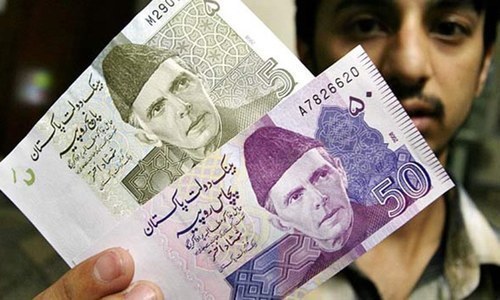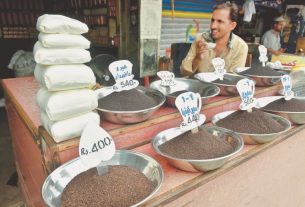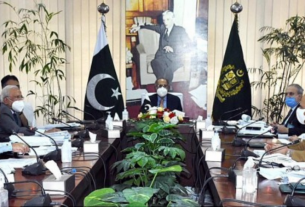THE arrival of the International Monetary Fund (IMF) mission’s new chief for Pakistan Ernesto Ramirez Rigo in Islamabad on March 26 was preceded a day earlier by an official announcement of an inflow of $2.2 billion Chinese assistance for balance of payments support.
As foreign exchange reserves rose to $17.58bn, Pakistani authorities said there was no immediate need for an exchange rate adjustment.
It was argued that both the trade and current account deficits have reduced. The current account deficit narrowed by 22 per cent to $8.84bn during July-February FY19 from $11.42bn recorded a year ago. More notable was the 59pc decline during the first two months of the year compared to the same period last year.
The improvement was contributed by more foreign borrowings, rise in workers’ remittances, cut in
imports through a combination of regulatory measures and sharp rupee devaluation. Exports, however, remained ‘flat’.
After the talks Finance Minister Asad Umar had with the visiting chief a statement issued by his ministry said “no dollar rate was being set with the IMF.”
It is not clear how the thin currency market and the economy will fare with a free float
The Monetary Policy Committee (MPC) has also decided to increase the policy rate by 50bps to 10.75pc, effective from April 1.
The high interest rate, businesspersons criticised, was not good for leveraged companies. Coupled with currency devaluation it would discourage investment and result in de-industrialistion.
According to reports, the IMF now wants Pakistan to shift from a managed float to a market-based flexible exchange rate. The Fund is no longer insisting on free float of the rupee.
Under the Fund’s proposed arrangement the MPC or a new high-powered committee will be assigned to determine the exchange rate on the basis of the Real Effective Exchange Rate (REER) model followed by the State Bank of Pakistan (SBP). The the 2010 data on which the current REER model is based needs to be updated.
Despite an over 33pc devaluation since 2017 and support by subsidies, export earnings, to quote the SBP, ‘remain flat in dollar value despite a notable increase in quantum of goods’ sold in foreign markets. Owing to this some economists seem to have sought salvation in the free float of the rupee.
Interestingly Dr Asad Zaman, a member of the government’s Economic Advisory Council (EAC), believes that the free float shifts the exchange rate risks from the government to the private sector and insulates the economy as a whole from macroeconomic crises.
A recent article by Dr Zaman recommends: “We must allow industries based on cheap imports to collapse, initially subsidising the emergence of new industries that would be profitable only if competing imports are too expensive because the Pakistani rupee is correctly valued.”
He further says that cheap imports fail the import substitution strategy and that breaking out of the rupee over-valuation trap remains a slow, painful and difficult process.
It is not clear how the thin currency market and the economy will fare with a free float, though the EAC member has also proposed some complementary measures. Critics argue that speculative capital movements in free float may lead to a preference for liquidity that may result in currency hoarding, a rise in interest rates and a fall in investment.
The free float of the dollar and euro seemed unable to prevent the international financial crisis of 2007-08 from occuring. The floating exchange rate leads to unnecessary movement of capital inflows and outflows which can severally damage an economy that has sound fundamentals.
The country which recovered from the South East Asia crisis the fastest was Malaysia. It imposed capital controls despite opposition from international financial institutions and global market players. Finally, the IMF conceded that temporary capital controls can be useful in tackling financial a crisis.
Another example is China’s yuan which has been allowed to fluctuate within a narrow band with outstanding success for the country’s industrialisation and rapid economic growth.
The key problem with a free float or market-based flexible exchange rate is that the REER is determined mostly by market supply, the demand of dollars and euros and global, regional and trading partners’ currency fluctuations. The Purchasing Power Parity (PPP) of national currencies matter increasingly less.
In case of developing countries like Pakistan, the intrinsic worth of the national unit — which is more accurately measured by the PPP — is denied due weight in REER.
The gap between the two is ever-widening. The external value of a depreciating national currency falls making devaluation a continuing cycle with short breaks.
Contributed by a high interest rate and imported cost-push inflation, the headline CPI inflation was officially recorded at 7.19pc for January, 8.2pc for February and 9.4pc for March. Significantly, core inflation (trimmed of non-food and non-fuel inflation) for the previous 14 months ending in March, rose to 8.5pc from 5.8pc for the same month a year ago.
The crux of the matter is that our current economic model is unable to produce enough goods and services to meet domestic needs. It can’t help us either save dollars or create enough trade surpluses for exports.



